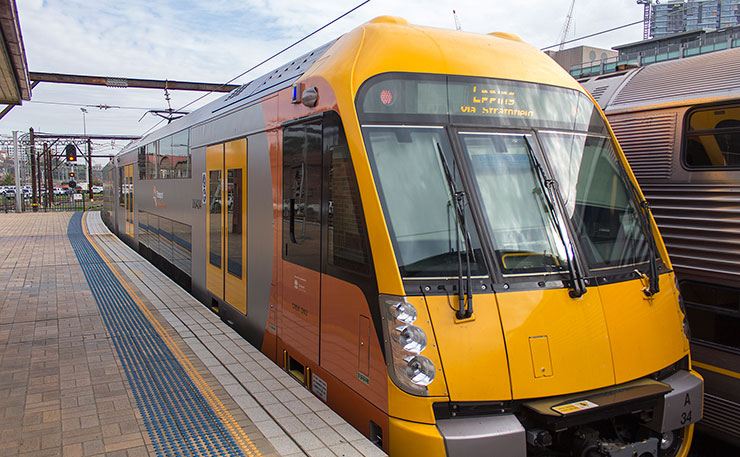Next week, the NSW government may finally succeed in making history, becoming the first in the world to cut the rail line between its two biggest cities.
A bill currently before NSW parliament is the end result of decades of jostling between transport planners, councillors, politicians, developers, industry officials and activists, in their battle over the few kilometres of rail that lead to Newcastle station, alongside the beautiful Hunter river. The legislation will allow the government “to sell or otherwise dispose of” about 3km of the publicly owned rail corridor starting east of Railway Street, through Wickham and Civic, and up to Newcastle Station.
The bill must be defeated, ironically for exactly the same reasons the government claims it is being enacted: renewing and revitalising Newcastle.
The Government’s idea of transforming Newcastle is limited to an ill-informed, narrow agenda of removing a key intercity public rail service to make way for private development and the construction of a short stretch of light rail. They say this is progress and we must all conform.
How ripping up a rail line that provides vital connectivity for people between Sydney, Newcastle and the Hunter region, and replacing it with high-rise development will help transform Newcastle is a ‘little’ detail the government has conveniently forgotten to explain.
Reliable, frequent and affordable transport is fundamental to the quality of our lives and at the heart of how liveable and vibrant a city or region is. It provides us access to jobs, schools and universities, and it’s how we connect to each other. For the Hunter, this also means opportunities for more tourism, economic growth and a thriving educational sector.
The preferred light rail route – which the government claims will provide an adequate replacement for the heavy rail – mostly runs along Hunter St, not the rail corridor. So why waste millions of dollars of public money to close the rail line and sell the land? Why not just get on and build light rail?
Moreover, we need to improve the intercity rail service to be faster and more frequent. While we’re at it, we must invest in the ailing bus network by providing frequent and reliable services on routes that people need. The Government has $460 million to spend, so why not put it to better use?
If there’s an argument to be had around whether the rail line divides Newcastle and prevents access to the foreshore, then let’s tackle that problem head on. The rail line could be sunk or put overhead to enable access. The foreshore could be converted to parkland to be enjoyed by the public while still retaining intercity train services into the heart of Newcastle.
Clearly, closing the line is not about improving public transport. It’s been over nine months since the Government ceased train services on Boxing Day last year. The replacement buses have already had disastrous effects – public transport patronage is dramatically reduced, forcing people to change modes for no reason and pushing them back into cars. People who rely on public transport to get around – including parents with prams, older people, those with disabilities – are bearing the brunt of the rail cut. Even the previous Transport Minister Gladys Berejiklian conceded the rail removal was not a “transport decision” when I questioned her about it last year.
Former Hunter Development Corporation Chairman Paul Broad – who resigned in August – recognised the proposed corridor development as breathtakingly short-sighted. Myopia, arrogance and the influence of the corporate sector has blind-sided government from a basic understanding of people’s needs.
In finally bringing the bill, the government is pitching the argument to be between their “revitalisation” plan and a “do nothing” approach. But this is artificial constraint is deceptive. Supporters of the heavy rail line want a world-class transport system in the Hunter, and they know that the intercity rail would constitute the essential backbone of that system. It was faster to travel between Sydney and Newcastle in the 1930s than it is now: a damning indictment of a lack of investment in transport infrastructure over the last few decades by Governments of both sides.
The government’s notion that ‘you can’t stop progress’ must be turned on its head: it is the government that is crippling public transport in the Hunter. It is the government that is allowing for vested interests to trump the public interest.
And now it is the NSW parliament, most crucially the Upper House, that must choose whose interests it truly represents.
Dr Mehreen Faruqi is a Greens MP and Transport Spokesperson.
Donate To New Matilda
New Matilda is a small, independent media outlet. We survive through reader contributions, and never losing a lawsuit. If you got something from this article, giving something back helps us to continue speaking truth to power. Every little bit counts.




